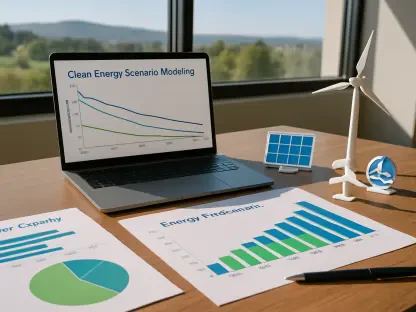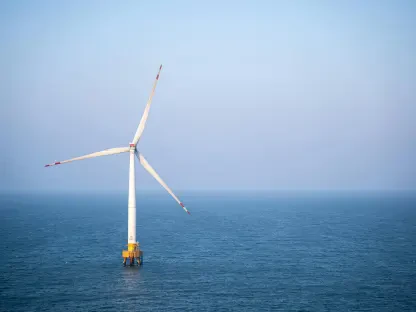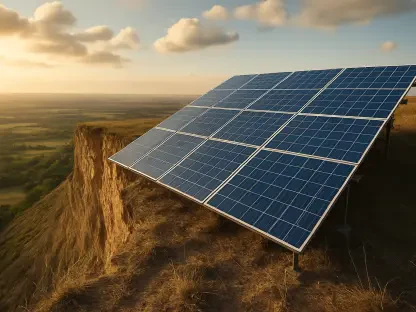Christopher Hailstone, a seasoned expert in energy management and grid reliability, lends his insights today on Waste Connections’ impressive performance despite facing tariff uncertainties. With a sharp focus on the company’s strategic maneuvers and financial resilience, Christopher provides a deep dive into Waste Connections’ strategies and outlook.
How would you describe Waste Connections’ overall performance in Q1 2025?
Waste Connections had an impressive first quarter this year. Under the seasonal challenges, their performance was commendable with net income rising to $241.5 million. This growth and a strong EBITDA showcase their operational efficiency and ability to manage their revenue streams under difficult circumstances.
What specific factors contributed to the “better than expected” results in the first quarter?
Several elements played pivotal roles. Strong pricing strategies and robust acquisition activities were crucial. Additionally, employee retention and effective integration of these new acquisitions kept operations smooth and revenue on target during what’s typically a weaker quarter for the company.
Can you elaborate on the “outsized” M&A activity mentioned by CEO Ron Mittelstaedt?
The acquisition front was very active, with notable deals increasing annualized revenues by over $125 million. These acquisitions included significant transactions like the “state-of-the-art” recycling facility in New Jersey. Such investments not only strengthen their market position but are also crucial for strategic growth, especially in key regions like New York City.
What significance does the acquisition of the “state-of-the-art” recycling facility in New Jersey have for Waste Connections?
This facility is a major asset, especially in the Northeast. Besides bolstering recycling capabilities, it supports commercial waste collection contracts, particularly in competitive hubs like New York City. Such infrastructure solidifies Waste Connections’ footprint and allows for expanded growth in these lucrative markets.
In which areas or regions are most acquisitions being targeted?
Waste Connections is focusing on both the U.S. and Canada, seeking a mix of tuck-ins, standalones, and franchise deals. These are being strategically selected across all operating regions, allowing the company to both expand and solidify its market positions efficiently.
How is Waste Connections managing the decline in solid waste volume and what steps are being taken to address this?
They faced a volume decline due to weather-related events but showed adaptability with the volume picking up by March. Purposeful shedding of poor-quality contracts also contributed to this dip. Nevertheless, the company is enhancing landfill and special waste tonnage, offsetting weaker construction volume.
Can you explain Waste Connections’ approach to the “purposeful shedding and non-renewal” of contracts?
This strategic shedding focuses on eliminating contracts that don’t align with their quality and profitability standards. By adjusting their contract base, Waste Connections ensures more reliable and profitable partnerships, ultimately supporting their long-term growth objectives.
What are the current trends in core pricing for Waste Connections, and how do they impact the company’s financial outlook?
There’s been a marked increase in core pricing, around 6.9%, which is above their initial projections. This solid pricing leverage ensures stable revenue, especially since most price increases are secured for the year, setting a robust financial tone for 2025.
How has the company managed to insulate itself from tariff-related impacts so far in 2025, and what strategies are in place for future tariff uncertainties?
Remarkably, Waste Connections has largely shielded its operations from direct tariff impacts this year. They’re strategically sourcing equipment from local manufacturers to mitigate future risks, demonstrating foresight in managing supply chain vulnerabilities.
How has Waste Connections adjusted its sourcing strategies to mitigate possible tariff impacts for equipment and parts?
They’ve begun sourcing a portion of their inventory domestically, a proactive step to dodge international tariffs. This shift not only reduces current exposure but also sets a sustainable precedent for future tariff uncertainties.
What challenges are currently faced in recycling and renewable energy credits, and how are they affecting Waste Connections’ operations?
Recycling markets, especially OCC and RINs, have seen decreased values. Although remaining stable, these drops impact revenue streams tied to recycling and renewable credits but Waste Connections is navigating these with cautious optimism and strategic stability.
What does the lowest-ever safety incident rate mean for the company, and what practices led to this achievement?
Achieving their lowest safety incident rate is a considerable milestone. It’s the result of prioritizing safety through targeted training and strong employee retention efforts, crucial when handling rapid acquisition expansions, securing operational integrity.
Looking toward Q2 and the rest of 2025, what are the primary objectives for Waste Connections?
The company’s sights are set on sustaining growth despite macroeconomic uncertainties. With a strong Q2 revenue forecast of $2.375 billion to $2.4 billion, they aim to hold their EBITDA margins firm and continue their strategic expansions and acquisitions.
How is Waste Connections addressing broader macroeconomic uncertainties while maintaining performance?
By reinforcing strategic pricing, streamlining efficiency in acquisitions, and diversifying their supply chain, Waste Connections is effectively insulating itself from broader economic swings while pursuing steady growth.
In what ways could tariff uncertainties potentially impact Waste Connections’ outlook for 2026?
Continuing uncertainties might challenge the supply chain and affect cost structures. However, their strategic domestic sourcing and established expertise in pricing and contract management position them to adapt effectively, albeit with caution for longer-term impacts.
Do you have any advice for our readers?
When navigating volatile markets, the key is being proactive and adaptable. Always have a contingency plan for supply chain disruptions, and prioritize strategic investments that align with your long-term goals.









